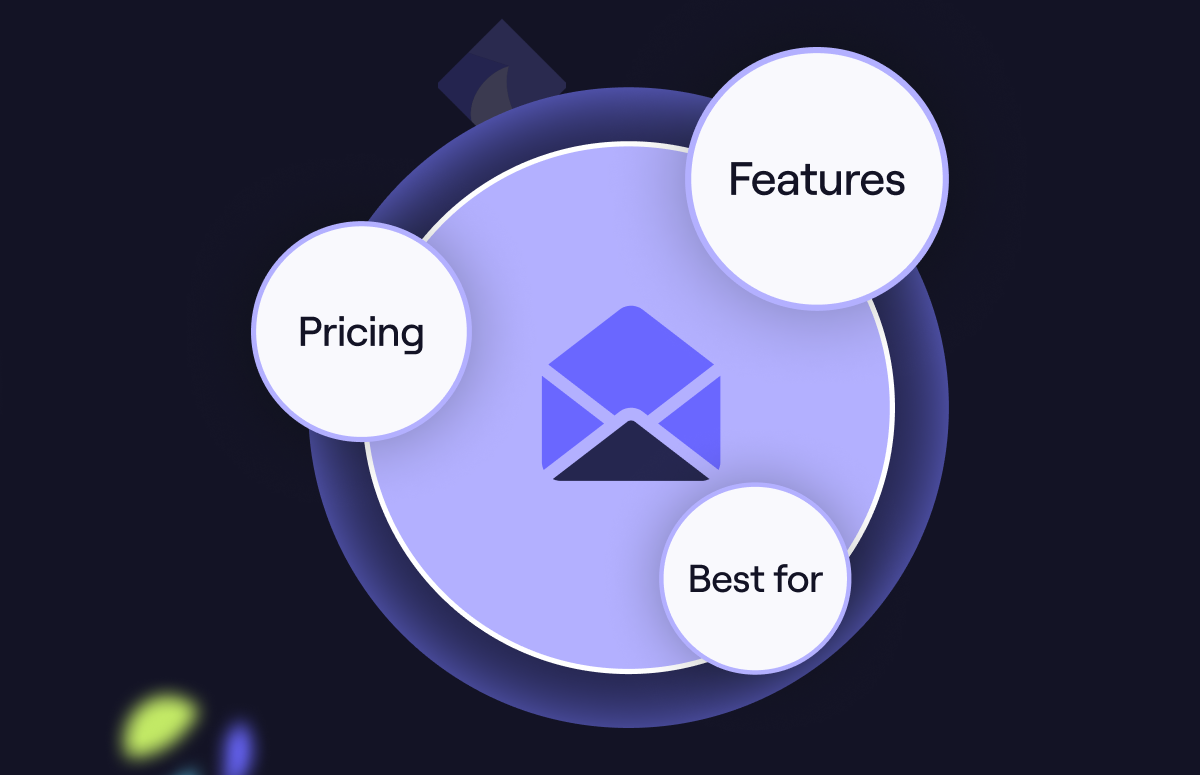How To Find Someone’s Phone Number [7 Ways]
The 7 best ways to find someone’s phone number:
Cold calling remains one of the most effective ways to reach decision-makers, but finding accurate business phone numbers can be challenging.
With increasing privacy concerns and data protection regulations like the GDPR and CCPA, it’s essential to use compliant and reliable methods to source contact details.
This guide explores the most effective ways to find prospect phone numbers for your B2B cold calling campaigns.
Let’s dive in 👇
1. Use B2B data platforms with phone verification
The easiest way to find someone’s phone number is to use a B2B contact database.
Many different providers are available, but they all share one thing in common: they do the heavy lifting of finding and verifying phone numbers so that you can focus on selling.
Cognism is the leading B2B platform for finding phone records. It stands out because of its unique dataset, Diamond Data®. The Cognism team calls every direct dial and cell phone number in this database, confirming that the right business contact picks up.
So when you call any Diamond Data® number, you’ll know that your sales prospecting efforts won’t go to waste.
And that’s not all! Check out these additional features:
- Cognism checks mobile numbers against Do-Not-Call (DNC) lists in a record 13 countries, including the UK, USA, Canada, Australia and New Zealand. That’s more than any other provider!
- Cognism’s Diamond Data® is proven to connect you with up to 87% of your prospecting list.
- Cognism manages an extensive database, with coverage across North America, Europe, Nordics, and DACH regions.
- In terms of contact records, Cognism’s database contains over 10 million phone-verified contacts.
How can you access Cognism’s data? There are two ways:
- Web app: Access the full database through Cognism’s web interface to build targeted prospect lists with advanced filters.
- Chrome extension: Find verified phone numbers while browsing LinkedIn, company websites, or your CRM. Export the data to your sales tech stack with a single click.
The platform ensures GDPR and CCPA compliance, integrates with major CRM systems, and lets you scale your prospecting efforts efficiently.
What Cognism’s customers say:
UserEvidence, a customer evidence platform for GTM teams, switched to Cognism after finding their previous data provider’s phone numbers weren’t delivering results.
Within just three months of implementing Cognism, they saw:
- 33% increase in sales pipeline.
- 8% improvement in cold call connect rates.
- 10 hours saved weekly on phone contact sourcing.
- 500+ additional contacts sourced per week.
The key difference? Data quality. In a head-to-head test against their previous provider, Cognism achieved:
- 98% match rate (vs. 72% from competitor).
- 22% call connect rate (vs. 14% from competitor).

CEO @UserEvidence
2. Find phone numbers on LinkedIn
With over 1 billion professionals on LinkedIn, it’s a crucial platform for B2B prospecting.
While LinkedIn doesn’t show phone numbers directly, there’s a simple solution: Chrome extensions!
LinkedIn Chrome extensions are tools that integrate with your browser to reveal contact info while you browse social media profiles. They automatically display phone numbers, email addresses, and other details which aren’t publicly visible on LinkedIn.
These are the most popular B2B browser extensions:
- Cognism: Best for sales and marketing teams that want to quickly find compliant, accurate prospect phone numbers on LinkedIn and company websites.
- Kaspr: Best for sales reps targeting European markets looking for accurate business phone numbers while prospecting on LinkedIn and Sales Navigator.
- ZoomInfo: Best for salespeople, marketers, and recruiters who want to find company and contact data on any website.
3. Check company websites
Company websites often contain detailed contact info, but finding the right phone numbers requires a systematic approach.
Here are some effective website research methods:
Browse key pages
Check the following sections on B2B sites:
- Contact Us pages (obvious but often overlooked).
- About Us section for executive contacts.
- Investor Relations for public companies.
- Press/Media sections for PR contacts.
- Regional office pages for local numbers.
Use advanced search operators
Type these commands in Google’s search bar to filter results:
- site:company.com “phone” OR “contact” OR “call”
- site:company.com intitle:“contact us”
- site:company.com intext:“direct line”
Check footer information
Scroll to the bottom of any website and see what you can find:
- Direct contact numbers.
- Regional office details.
- Department-specific contacts.
- Support line information.
Pro tips for website research
- Browse through department-specific pages like sales and regional management sections rather than just the main contact page.
- Check international versions. Switch between country/region versions if you’re seeking professional contacts in foreign territories.
- Use tools like Visualping to track contact page updates. You can also set up Google Alerts for company news.
4. Leverage social media platforms
While LinkedIn is the go-to platform in B2B, other social media channels can reveal additional details that might not be available elsewhere.
Here are some social media research options:
- X (formerly Twitter) is particularly useful for finding support or sales team contact details, especially for tech companies. Many businesses post their contact numbers in response to customer queries.
- Facebook Business Pages often contain phone numbers in the “About” section, and some companies list different numbers for different departments.
- Instagram Business Profiles now include contact buttons that sometimes reveal phone numbers not listed on other platforms.
Pro tips for social media research
- Follow their executives and track announcements about new offices or contact changes.
- Build genuine connections by engaging thoughtfully with company posts and participating in their online events.
- Use social listening tools to monitor company mentions and identify public-facing team members who might be valuable connections.
5. Build your professional network
Professional events and networks can be valuable sources for finding direct dials, especially for high-level decision-makers.
Here are some networking strategies:
Browse online directories for events
They often contain:
- Speaker contact information.
- Exhibitor directories.
- Attendee lists (when available).
- Event organiser contacts.
Check professional associations
These are good places to find potential business contacts:
- Member directories.
- Industry committees.
- Leadership contacts.
- Regional chapters.
Attend trade shows
You’ll often find the following:
- Exhibitor lists.
- Presentation materials.
- Business card exchanges.
- Follow-up materials.
Pro tips for networking
- Focus on building authentic relationships by consistently attending industry events and contributing meaningful insights.
- Keep your network strong through regular check-ins, sharing relevant industry updates, and making thoughtful introductions between connections.
6. Utilise online business directories
While B2B lead generation platforms and LinkedIn tools provide the most reliable data, online directories can be valuable supplementary sources for finding phone numbers, especially for smaller or local businesses.
Check the following types of directories:
- Trade association memberships.
- Professional organisation listings.
- Specialised directories for certain marketplaces/industries.
- Regional business networks.
Pro tips for directory research
- Always cross-reference contact information across multiple directories; look for verified business badges to ensure accuracy. Pay attention to listing dates and any inconsistencies.
- Use boolean operators and advanced search filters such as industry, location, and job titles to find correct contact details.
- Stay alert for the red flags of poor-quality data like outdated listings, generic contact numbers, or inconsistent company information.
7. Use search engines strategically
Search engines are powerful tools for finding businesspeople and their contact details.
But you have to use them strategically. Don’t just search for “[company name] phone number” – try these advanced search operators:
- site:company.com “phone” OR “contact” - Search throughout the website.
- filetype:pdf “company name” “phone number” - Search documents.
- intitle: “contact us” “company name” - Find contact pages.
Pro tips for using search engines
- Cast a wider net by searching multiple name variations, company affiliations, and industry-specific terms. Use location and date filters to narrow down results.
- Always verify your findings by cross-referencing across multiple sources. Pay attention to information consistency and when details were last updated.
Phone number search options: comparison table
B2B data platforms (e.g. Cognism)
Low
High
Enterprise sales teams needing verified, scalable data and high connection rates for outbound campaigns.
LinkedIn & Chrome Extensions
Medium
Medium
Sales teams targeting LinkedIn-active professionals, especially in tech and B2B sectors.
Company website research
High
High
Small teams or individual sellers targeting specific companies with limited budgets.
Social media platforms
High
Free-Low
Support teams and sales reps targeting companies with a strong social media presence.
Professional networks & events
Very High
Medium-High
High-value enterprise sales requiring personal relationships and direct executive access.
Business directories
Medium
Free-Medium
Local business targeting and industry-specific prospecting where structured data is available.
Search engines
High
Free
Research-heavy prospecting when targeting specific companies or finding hard-to-reach contacts.
Find verified phone numbers instantly
While there are many ways to find phone numbers, Cognism stands out as the most efficient and reliable solution for B2B sales teams.
Cognism delivers what matters most:
- Higher connection rates with decision-makers through phone-verified mobile numbers.
- Unrestricted access to comprehensive contact data (subject to fair use policy).
- Peace of mind with industry-leading compliance standards, including GDPR and CCPA compliance.
- Smart targeting with advanced buyer intent data to help you reach prospects at the right time.
- Seamless integrations with your existing tech stack.
Frequently asked questions
How can I find someone’s phone number online for free?
You can start with:
- Cognism’s free data sample which offers 25 leads for you to test!
- Kaspr’s free tier for basic LinkedIn prospecting.
- Company websites’ contact pages.
- Business directories and professional networks.
How do I find a valid phone number?
The most reliable way to find valid phone numbers is through Cognism’s Diamond Data®, which offers:
- Phone-verified mobile numbers cleaned against Do-Not-Call lists.
- Up to 87% connection rate with verified numbers.
- Coverage across North America, Europe, Nordics, and DACH regions.
- Over 10 million global phone-verified contacts.
Where do B2B databases get phone numbers from?
B2B databases compile phone numbers from multiple sources, including:
- Company registrations.
- Professional networks.
- Website data.
- Direct business verification.
- Public records.
- Business registries.
- Professional directories.
What is the best way to find someone’s phone number?
The most efficient approach is using a B2B phone number search tool like Cognism.
Why? Because it:
- Provides phone-verified numbers with high connection rates.
- Ensures compliance with the GDPR and CCPA.
- Integrates with major CRM systems.
- Offers a user-friendly web app and Chrome extension.
What is the best phone number lookup tool?
Two leading options stand out:
- Cognism: Best for enterprise sales teams needing verified data and high connection rates.
- Kaspr: Good for sales teams specifically targeting European markets through LinkedIn.



